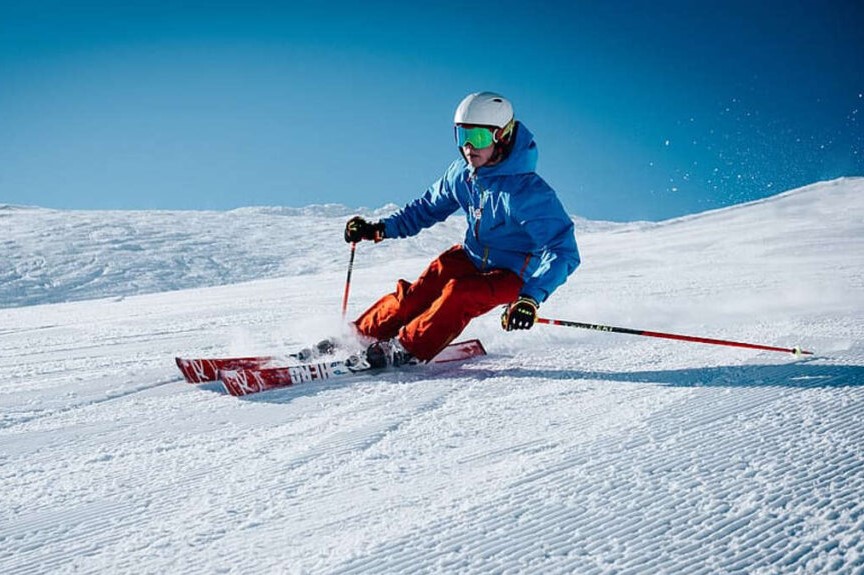
High blood pressure and heart disease in the mountains: how to behave?
Everyone can go to the mountains, if the pressure is well controlled, but those suffering from a heart condition must adopt some more fundamental precautions
In fact, reaching the peaks and practicing physical activity in the mountains can have unfavorable effects for hypertensives and heart patients, especially linked to the increase in pressure that occurs in patients suffering from these disorders.
For this reason it is essential not to go higher than allowed, to follow small behavioral rules such as eating well and staying warm, carrying out all the necessary pre-departure medical checks and monitoring one’s condition during the stay in the mountains.
Altitude and hypertension, why is ‘climbing’ bad?
Going up in altitude the oxygen concentration tends to decrease: for this reason, already at 1,200/1,500 meters above sea level it is significantly lower than it could be in the plains.
Even the cold is the enemy of heart sufferers as it constricts the arteries and coronaries, increasing the pressure and favoring ischemic episodes, especially in those who are predisposed.
In this case, above 1,500 meters of altitude, but even more above 2,000 meters, there is an increase in pressure.
For this reason, those with high blood pressure in the mountains will have to pay more attention than the others.
In agreement with the doctor, in selected cases, it is possible to decide on a small increase in the antihypertensive therapy.
In summer, however, with milder temperatures, this effect is less important.
Pressure in the mountains: when and how to control it
Cardiopathic patients should carry out a medical check-up before departure and regularly monitor their blood pressure in the mountains, because it could rise above the threshold values.
Even normotensive patients who do not have heart disease, but who may be ‘at risk’ due to familiarity and other conditions, should keep their blood pressure monitored.
In fact, it could find its pressure higher than the one it records in the city.
We remind you that blood pressure must remain within a pre-established range of values to ensure oxygen and nutrients to all tissues.
These values should ideally be:
- 80 mm\Hg for the minimum;
- 120mm\Hg for maximum.
In any case they must not exceed:
- 90 mmHg for minimum pressure;
- 140 mmHg for maximum pressure.
You can measure your blood pressure at any pharmacy or yourself with portable measuring instruments.
What are the alarm bells for heart sufferers in the mountains
The main alarm bell is the feeling of fatigue and shortness of breath: if the patient feels that he is beginning to be short of breath, it is better to go down.
Those suffering from coronary heart disease may also experience a feeling of heaviness in the chest or abnormal palpitations, especially when walking uphill, due to the typical gradients of mountainous areas.
In this way, in fact, the cardiovascular system gets more tired and the pressure tends to increase, as well as the heart rate and the heart’s need to be supplied with oxygen.
Even in these cases it is necessary to get off and be checked by a doctor.
Mountains and heart: who is most at risk?
Patients with unstable forms of ischemia or severe heart failure should avoid altitudes.
If the patient has well-controlled hypertension, non-serious coronary heart disease, mild heart failure (first and second class) and optimal blood pressure, he can go to the mountains, but it is important that he adopts some fundamental precautions to live the altitude with a peaceful heart.
Rules and advice for enjoying the mountains in serenity
Patients with heart disease, but not subject to severe forms of hypertension, decompensation and coronary artery disease, should follow these simple rules:
- always cover up very well, keeping the chest and also the mouth warm. Inhaling frozen air, in fact, can cause ischemic episodes in those predisposed to coronary heart disease;
- try to get your body used to the altitude: stay at a moderate altitude for some time and only then climb further in altitude;
- avoid eating fatty and very salty foods, alcohol and all foods that increase blood pressure and worsen coronary risk;
- if possible, do not exceed 2000 meters as an altitude;
- avoid or limit physical exercise to a minimum, commensurating the activity with your cardiological conditions. Better to walk than run, preferably well covered.
Read Also
Emergency Live Even More…Live: Download The New Free App Of Your Newspaper For IOS And Android
Holter Blood Pressure: Everything You Need To Know About This Test
Twenty-Four-Hour Ambulatory Blood Pressure Monitoring: What Does It Consist Of?
Full Dynamic Electrocardiogram According To Holter: What Is It?
Hypertension: Symptoms, Risk Factors And Prevention
Organ Complications Of Hypertension
How To Conduct Antihypertensive Treatment? An Overview Of Drugs
Blood Pressure: What It Is And How To Measure It
Aetiological Classification Of Hypertension
Classification Of Hypertension According To Organ Damage
Essential Hypertension: Pharmacological Associations In Antihypertensive Therapy
Treatment Of High Blood Pressure
Heart Failure: Causes, Symptoms And Treatment
The Thousand Faces Of Vascular Disease
Blood Pressure: When Is It High And When Is It Normal?
Metabolic Syndrome: Why Not To Underestimate It
Endocrine And Metabolic Emergencies In Emergency Medicine
Drug Therapy For The Treatment Of High Blood Pressure
Assess Your Risk Of Secondary Hypertension: What Conditions Or Diseases Cause High Blood Pressure?
Holter Monitor: How Does It Work And When Is It Needed?
What Is Patient Pressure Management? An Overview
Head Up Tilt Test, How The Test That Investigates The Causes Of Vagal Syncope Works
Cardiac Syncope: What It Is, How It Is Diagnosed And Who It Affects
Holter Blood Pressure: What Is The ABPM (Ambulatory Blood Pressure Monitoring) For?
Sinus Tachycardia: What It Is And How To Treat It
Emergency Room Access: Neurology Emergencies


